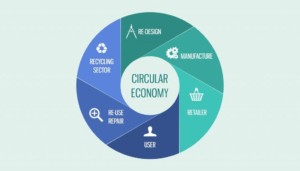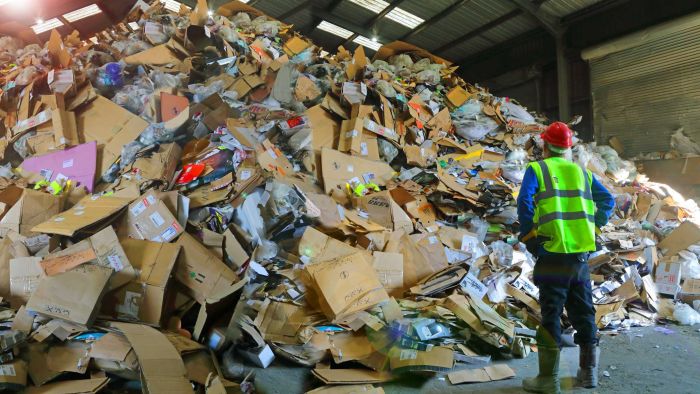The recycling crisis story
This article is the first of five I wrote for Inclean Magaazine, about the five hottest sustainability trends in 2019 and how they will impact the cleaning industry.
In March 2018 the recycling world went into shock. Tired of receiving contaminated recyclable waste, China announced a policy called National Sword that restricted the import of 32 different waste types, including most plastics, unless it met stringent contamination limits. While this ‘ban’ was a surprise to many of us who hadn’t realised our diligently separated waste was being exported back to China, it spells potential disaster for the waste management sectors of Australia and New Zealand.
According to Blue Environment, Australia was sending 30% of all our recycled metal, paper and plastic to China, representing a whopping 1.27 million tonnes of waste in 2017. China bought nearly NZ$26million of New Zealand’s recyclable plastic, metal and paper in 2017, representing 50% of all exported waste according to Stats NZ.
While this could lead to exciting opportunities for local waste reprocessing plants, the reality is that we have limited local markets to replace China’s previous demand for recyclable materials. So with other Asian markets such as Malaysia getting close to capacity, and no time to establish new markets at home, mountains of waste are rapidly stockpiling in recycling depots, causing fire risks and sending the market into crisis.
In Australia for example, the price of low quality mixed plastic has dropped from approximately A$325 per tonne to A$75 per tonne, while paper has crashed from around AU$124 per tonne to zero. It is often costing more to provide waste collection services than the materials are worth to sell. This will push up collection fees and reduce the incentive for Councils and companies to recycle.

How will China’s ‘ban’ effect cleaning companies?
What effect will this have on cleaning service providers? Will you still be required to manage recycling and waste separation in the future? The New Zealand markets for glass, cardboard and PET/HDPE plastics are currently holding up “reasonably well” according to Eugenie Sage, Minister of Conservation. In Australia, several State Governments are propping up their recycling sector with hand-outs to Councils. So it appears it will be business as usual for a while – but be prepared that this is a temporary fix.
One of the medium term solutions being put forward, is to increase the quality of recycling to meet China’s new contamination limits, thus enabling exports to re-open. There are calls for Government investment into secondary processing plants for this purpose. The waste management sector is also seeking investment to develop home-grown recycling facilities and markets. Others are pushing for “product stewardship” regulations, which means companies are held responsible for the end of life of their products, by ensuring their packaging is recyclable or returnable, as is the case in Germany.
If any of these strategies are successful, it could result in one of two outcomes for cleaning companies:
- It could increase the need for skilled and innovative on-site recycling audits and processing, to remove the types of recyclable material with insufficient markets and all other contamination, or
- It may spell the end of source separation and recycling bins as we know it, with all waste being sent to off-site processing plants where separation can be fully controlled.
But in the long term, we have a global waste problem that needs to be fixed. No matter how well, or where, we manage recycling, it won’t lead to zero waste.

The circle economy opportunity
The problem with recycling is that waste materials can usually only be reprocessed once or two at most, because each time it loses integrity. This is called “down-cycling”. For example: office paper becomes cardboard packaging. Rubber tyres become roads. The aim of the “circle economy”, is to keep materials in the production loop for as long as possible.
Also called the blue economy, circular business models typically fall into one or more of the following four categories:
- Circular design: This means altering the lifecycle of a product by the way it is designed. For example, designing more durable goods with parts that come apart to be easily replaced and/or recycled.
- Product as a service or subscription: The classic example of this approach is Interflor carpet squares that are leased not sold, so that the company can collect, recycle and reuse the materials. Also called the “sharing economy”, this approach allows the owner of equipment or a vehicle to control and extend its life, through maintenance and repair.
- Repurposing: Also called “up-cycling”, as the name suggests, it is the opposite of down-recycling by finding ways to turn used materials and product parts into higher value goods or materials. Repurposing is an exciting business opportunity because it requires the product manufacturer or user to collaborate directly with another business or organisation that values what you throw away – keeping the materials in the system and out of landfill.
- Resource recovery: This includes traditional recycling and converting waste materials into renewable energy, and usually represents the least efficient, sustainable and creative option.
For cleaning suppliers and service providers, the circle economy represents a potential way forward out of this crisis. Which is essentially, because as The Waste Management Institute of New Zealand accurately predicted:
“Without decisive action to address the (China’s recycling ban) issue, recyclable material could be sent to landfill, councils and communities will suffer financially, and operators could go out of business”.

